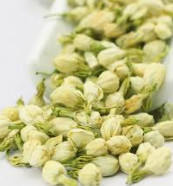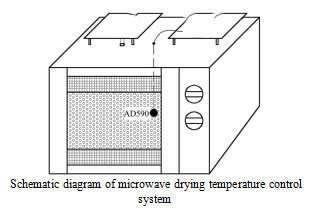
- Shandong Microwave Machinery Co.,Ltd.
- To be the Leader of microwave drying and edible oil refining equipments Manufacturer
Home> Company News> Study on Jasmine Tea Made by Different Drying Methods
- AddressNo. 225, Huangqiao Village, Beiyuan, Tianqiao District, Jinan, Shandong, China
- Factory AddressNo. 225, Huangqiao Village, Beiyuan, Tianqiao District, Jinan, Shandong, China
- Phone(Working Time)+86 0531 85064681
- Phone(Nonworking Time)0086-15020017267
- Fax+ 86 0531 85064682
Study on Jasmine Tea Made by Different Drying Methods
2018-12-11 15:19:25
Absrtact: The quality analysis of jasmine tea produced by five drying methods showed that the tea polyphenols, amino acids, flavonoids and water extracts of jasmine tea produced by low-temperature vacuum-hot air combined drying method were slightly lower than those made by freeze-vacuum drying method. 。
However, the content of jasmine tea prepared by microwave drying is relatively higher than that by other drying methods. In terms of sensory quality, the jasmine tea made by microwave drying equipment is obviously superior to that made by other drying methods.
Key words: drying method; microwave drying of jasmine tea; bass processing; quality

Jasmine is an evergreen shrub of the genus Jasmine in the family Oleaceae. Jasmine tea is one of the special tea with a long history in China. It is popular with consumers because of its fresh and elegant flower fragrance and mellow tea taste. At present, the research on jasmine tea mainly focuses on the influence of water content, stack temperature, flower allocation and time on the quality of jasmine tea, while few studies have been reported on the aroma release of jasmine and the characteristics of tea.
Different drying methods of green tea lead to different changes in the physical structure of products. This paper studies the effects of different drying methods on the quality of jasmine tea products, with a view to producing high-grade jasmine tea and expanding the processing theory of jasmine tea for peer reference.
According to the existing research results, the traditional theory of tea aroma absorption mainly includes pure physical adsorption and the coexistence of chemical adsorption and physical adsorption. Due to the lack of sufficient experimental basis for chemical adsorption theory, pure physical adsorption theory dominates. The Aroma Absorption of tea depends on the adsorption of tea surface on capillary condensation. The larger the porosity of tea, the larger the specific surface area, the stronger the adsorption capacity of tea surface.
Krokida M K et al. studied the effects of different drying processes on the volume density and porosity of materials. When the moisture content is constant, the porosity of freeze-drying materials is the highest, followed by microwave, vacuum and convective drying. It can be seen that the freeze-vacuum drying green tea has the highest porosity and the strongest fragrance absorption ability, but its fragrance and flower fragrance are distinct, transparent and translucent.
In low temperature and vacuum drying, the appearance, color and nutritional components of green tea are fully retained, and the porosity is relatively large. After hot air drying in the later stage, the fragrance can be further developed. The jasmine tea produced by traditional hot air drying is more popular and can not meet people's current high-quality tea. The requirement of leaves; the quality factors of jasmine tea made from green tea by microwave drying, such as aroma, taste and shape, are poor due to excessive local heating of green tea.
 High efficiency food beverage factory stone paper production line
High efficiency food beverage factory stone paper production line Factory price Fully automatic Machine PP/PS Plastic Sheet Production Line
Factory price Fully automatic Machine PP/PS Plastic Sheet Production Line used deformered bar rolling mill production line
used deformered bar rolling mill production line Manufacturing plant automatic factory puffed sticky rice cracker production line
Manufacturing plant automatic factory puffed sticky rice cracker production line Production Line Pp Ppr Plastic Pipe Making Machine 20-63mm Multi-layer Extrusion Production Line For Water Supply
Production Line Pp Ppr Plastic Pipe Making Machine 20-63mm Multi-layer Extrusion Production Line For Water Supply